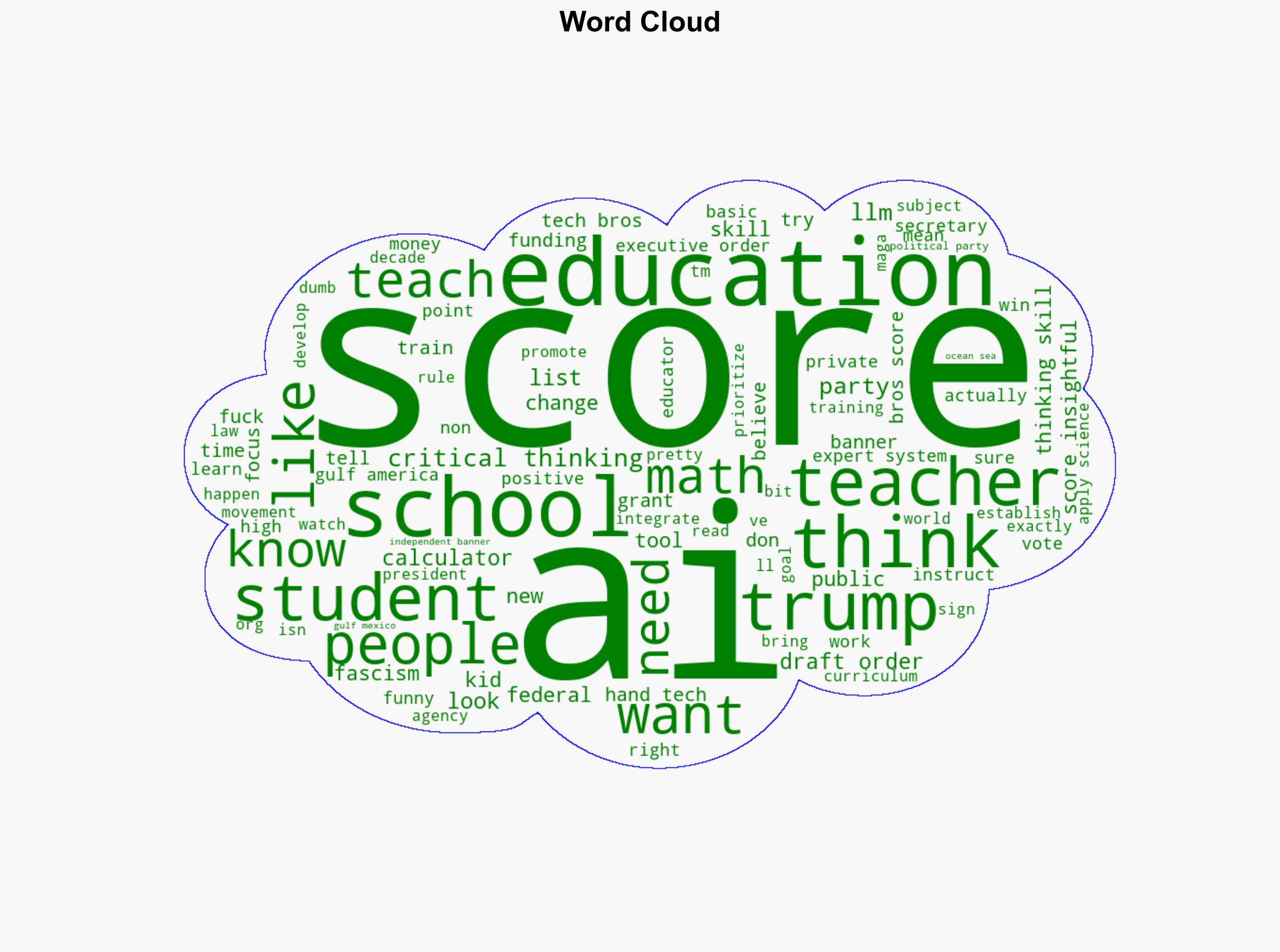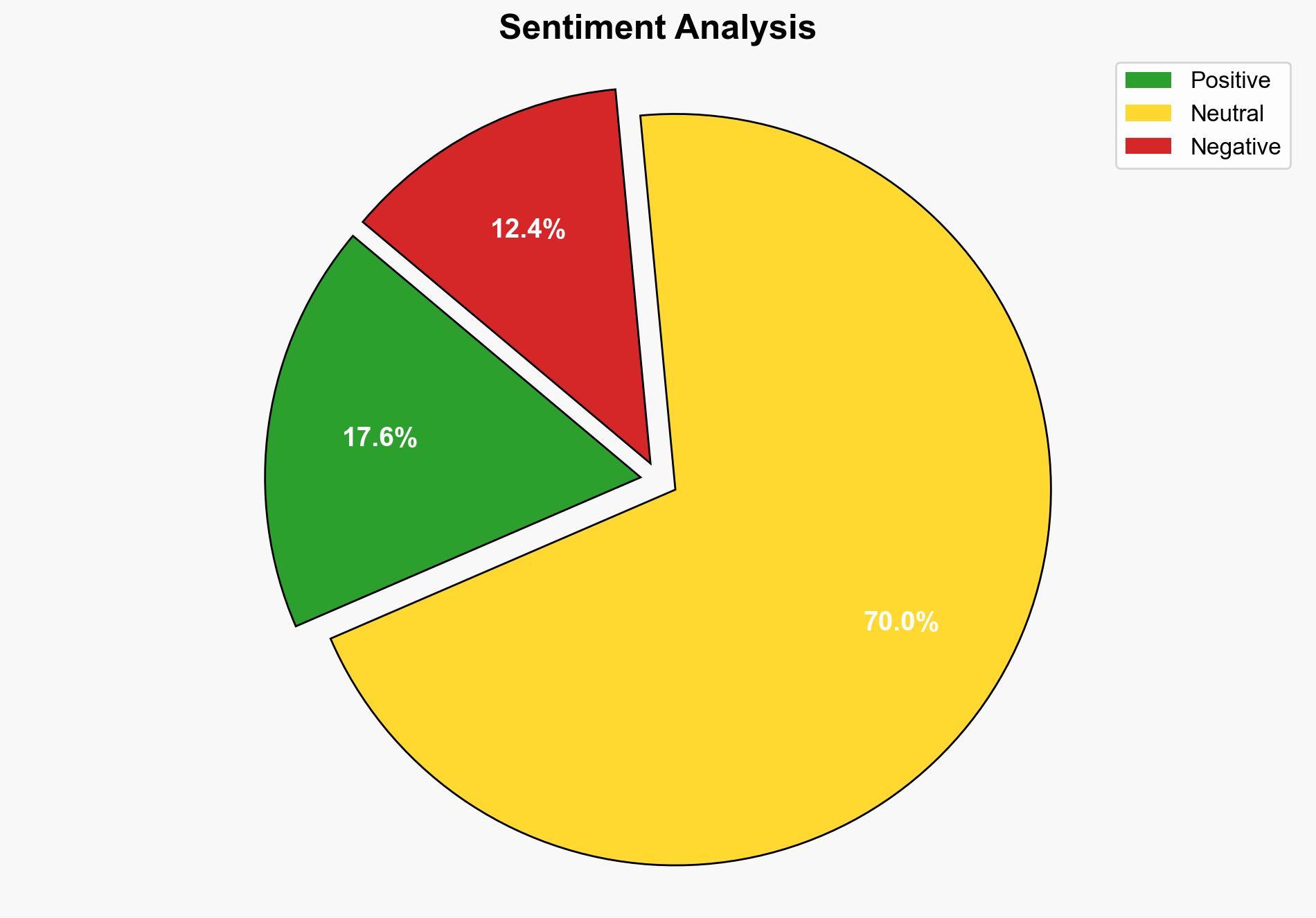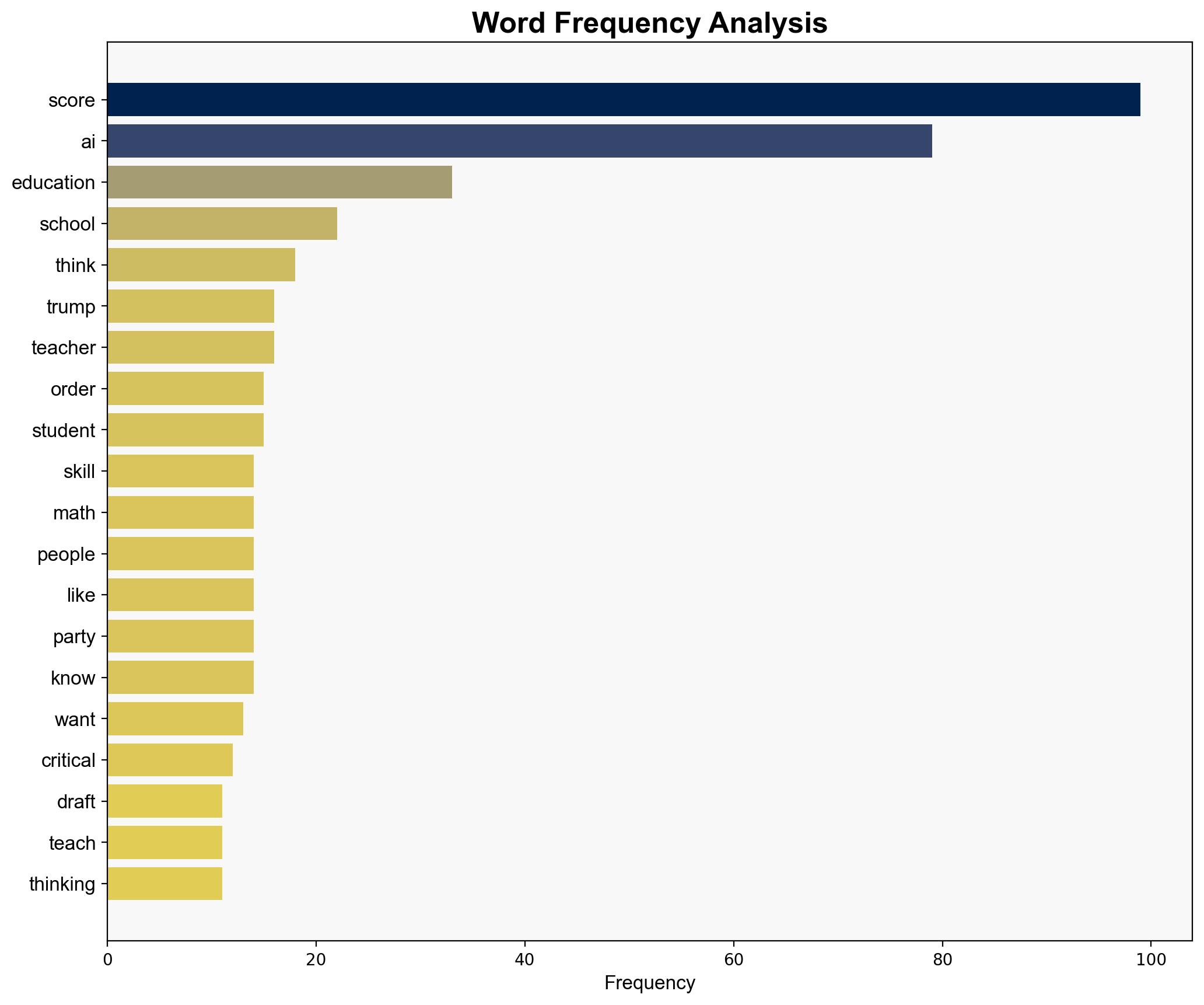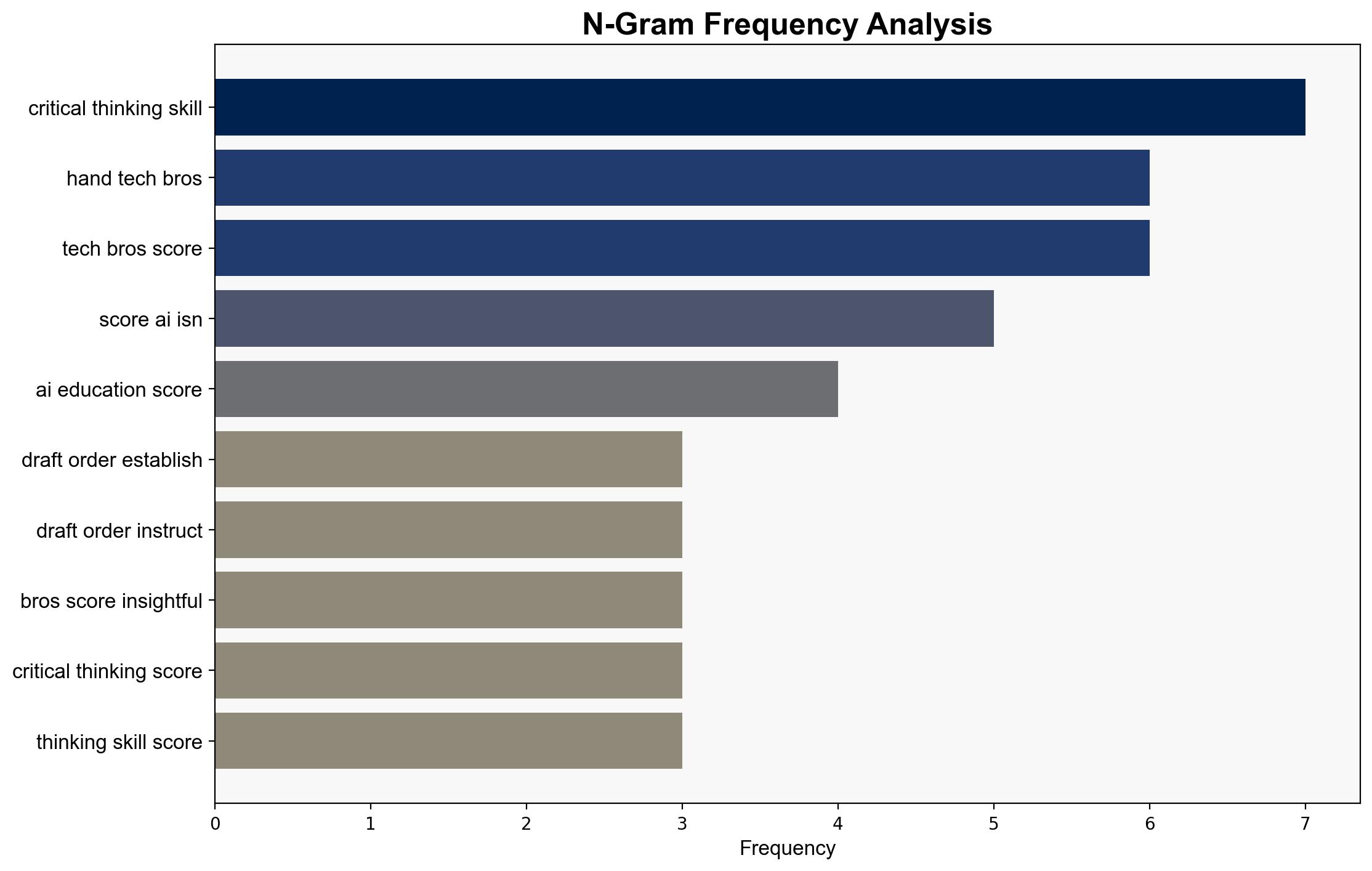Draft Executive Order Outlines Plan To Integrate AI Into K-12 Schools – Slashdot.org
Published on: 2025-04-24
Intelligence Report: Draft Executive Order Outlines Plan To Integrate AI Into K-12 Schools – Slashdot.org
1. BLUF (Bottom Line Up Front)
The draft executive order proposes integrating artificial intelligence (AI) into K-12 education, aiming to enhance AI literacy and critical thinking skills among students. Key initiatives include public-private partnerships, teacher training, and the establishment of a task force and AI challenge competitions. The proposal is predecisional and subject to change, with potential impacts on educational policy and workforce development.
2. Detailed Analysis
The following structured analytic techniques have been applied to ensure methodological consistency:
Analysis of Competing Hypotheses (ACH)
Evaluated the potential motivations behind the draft order, such as improving national competitiveness in AI, addressing workforce skill gaps, and enhancing educational outcomes. The most plausible explanation is a strategic move to position the U.S. as a leader in AI education.
SWOT Analysis
Strengths include leveraging existing federal resources and fostering innovation through partnerships. Weaknesses involve potential resistance from educators and the need for extensive teacher training. Opportunities lie in creating a tech-savvy workforce, while threats include rapid technological changes outpacing educational adaptation.
Indicators Development
Key indicators to monitor include the establishment of partnerships, allocation of federal grants, and the rollout of AI literacy programs. These will signal progress and potential challenges in implementation.
3. Implications and Strategic Risks
The integration of AI in education could reshape the educational landscape, influencing curriculum design and teaching methodologies. Strategic risks include potential disparities in resource allocation and the challenge of keeping educational content current with technological advancements. There is also a risk of over-reliance on AI tools without adequate human oversight.
4. Recommendations and Outlook
- Develop a phased implementation plan to ensure smooth integration of AI into curricula.
- Invest in comprehensive teacher training programs to equip educators with necessary skills.
- Foster collaboration between educational institutions and tech companies to ensure relevant and up-to-date AI content.
- Scenario projections: Best case involves successful integration leading to improved educational outcomes; worst case involves resistance and implementation delays; most likely scenario sees gradual adoption with mixed results initially.
5. Key Individuals and Entities
Michael Kratsios, Linda McMahon, Lori Chavez-DeRemer, David Sacks.
6. Thematic Tags
(‘AI in education’, ‘public-private partnerships’, ‘teacher training’, ‘workforce development’)





